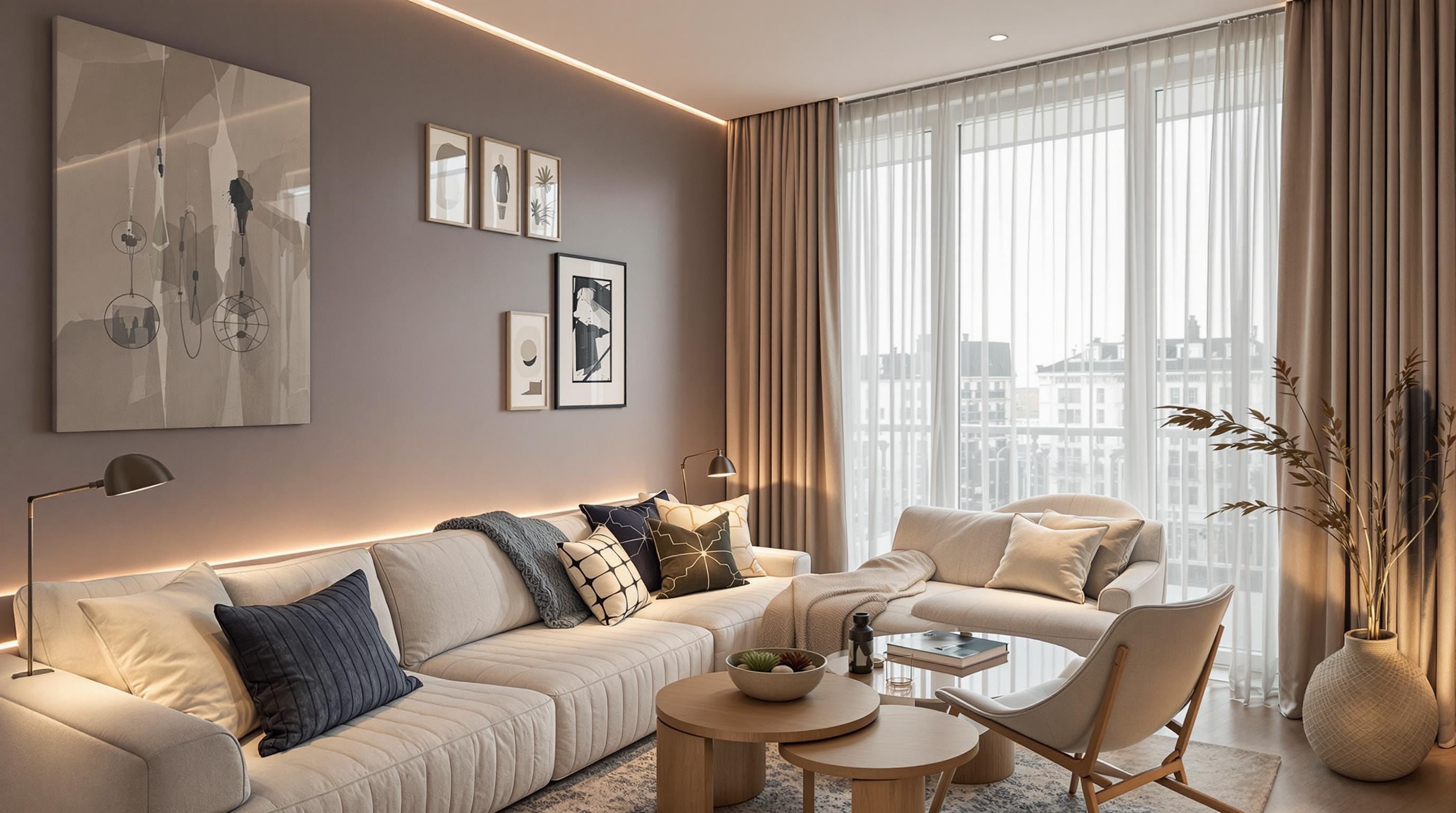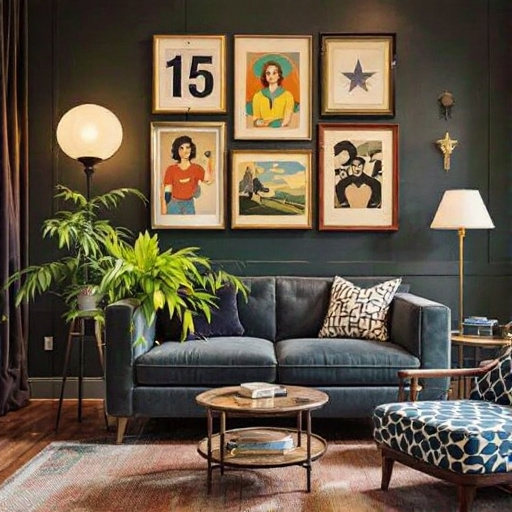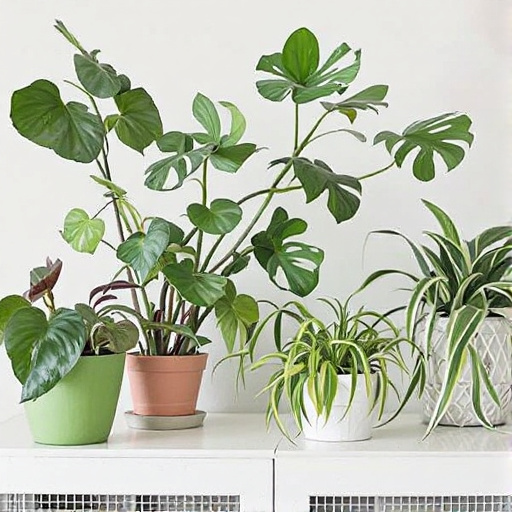Featured Articles
- 12 Ingenious Lighting Techniques That Illuminate Your Home’s Hidden Potential and Boost Ambiance
- Harnessing Biophilic Design: How Integrating Natural Patterns Boosts Wellbeing and Comfort Indoors
- Revamping Spaces: Unconventional Uses for Everyday Household Items in Home Improvement Projects
- Reviving Retro: How Vintage Home Decor Can Transform Modern Spaces into Timeless Treasures
- Transforming Trash: Innovative Upcycling Ideas for Unused Household Items in Home Improvement
12 Ingenious Lighting Techniques That Illuminate Your Home’s Hidden Potential and Boost Ambiance
12 Ingenious Lighting Techniques That Illuminate Your Home’s Hidden Potential and Boost Ambiance
12 Ingenious Lighting Techniques That Illuminate Your Home’s Hidden Potential and Boost Ambiance
1. Layered Lighting
Layered lighting is a fundamental technique that combines ambient, task, and accent lighting to create a dynamic atmosphere in any room. This approach ensures that lighting is both functional and aesthetically pleasing, allowing you to adjust brightness according to your needs.
By using multiple light sources at different levels, such as overhead fixtures, table lamps, and wall sconces, you add depth and texture to a space. Layered lighting can transform a plain room into one that feels welcoming and well-designed.
Experts recommend starting with ambient lighting, then incorporating task lighting in work areas, and finally accent lighting to highlight architectural features or artwork (Lighting Research Center, 2022).
2. Dimmable Fixtures
Dimmable lighting allows you to control the intensity of light to match the mood and time of day. Installing dimmers is a simple way to introduce versatility without changing fixtures or bulbs.
With dimmers, a brightly lit room can quickly become cozy for evening relaxation. This flexibility can improve comfort and energy efficiency by avoiding unnecessary full brightness.
Many modern LED lights are compatible with dimmers, making this option both affordable and easy to implement in existing setups (Energy Star, 2023).
3. Hidden LED Strips
LED strip lights are thin, flexible circuits embedded with small LEDs that can be placed in inconspicuous areas like under cabinets, shelves, or along coving. These hidden sources create a gentle glow that enhances ambient lighting without overpowering the space.
This technique highlights architectural details or provides subtle illumination in dark corners, adding sophistication while improving visibility. LED strips are energy-efficient and have a long lifespan.
Designers often use color-changing LED strips to customize the mood further, offering an innovative way to personalize a home’s lighting (The Spruce, 2021).
4. Pendant Lighting for Focal Points
Pendant lights hung above dining tables, kitchen islands, or entryways serve as striking focal points. These fixtures combine form and function, providing direct task lighting while adding style.
Choosing pendants with adjustable cords or chains allows you to vary the height, influencing both light distribution and visual impact. Grouping multiple pendants creates a dramatic effect suited to modern interiors.
Besides enhancing ambiance, pendant lighting guides the eye and defines specific zones within an open-plan arrangement, making spaces feel more intentional and curated (Houzz, 2022).
5. Wall Sconces for Ambient Glow
Wall sconces are versatile fixtures that emit soft, indirect light, perfect for creating a warm and inviting atmosphere. Positioned strategically along hallways, living rooms, or bedrooms, they reduce shadows and add dimensionality to walls.
Choosing sconces with upward or downward light spreads can affect the mood: uplighting fosters openness, while downlighting creates intimacy. Some sconces also double as decorative elements, complementing interior themes.
Incorporating wall sconces into your lighting plan balances brightness and introduces an understated elegance not achievable with overhead lights alone (Architectural Digest, 2020).
6. Smart Lighting Controls
Smart lighting systems use sensors, timers, and apps to automate and customize lighting settings remotely. They offer convenience, energy savings, and the ability to tailor light intensity and color temperature throughout the day.
For example, some smart bulbs mimic natural daylight cycles, boosting alertness during the morning and promoting relaxation at night. Integration with voice assistants adds hands-free control.
Adopting smart lighting can significantly enhance the home's ambiance and accessibility, providing both aesthetic and functional improvements (CNET, 2023).
7. Light Layering with Floor Lamps
Floor lamps provide both functional lighting and decorative appeal, especially in living rooms or corners lacking ceiling fixtures. When combined with other light sources, they contribute to layered lighting strategies.
Their portability allows you to experiment with placement and style, making it easy to change the mood or brighten specific spots. Floor lamps also act as design accents, from minimalist to vintage styles.
Using floor lamps with adjustable heads grants targeted task lighting, such as for reading or hobbies, enhancing comfort and usability (Better Homes & Gardens, 2021).
8. Reflective Surfaces to Amplify Light
Employing mirrors and glossy surfaces can amplify natural and artificial light, making spaces feel brighter and larger. Proper placement opposite windows or light fixtures optimizes this effect.
Reflective decor elements, such as glass tables or metallic finishes, scatter light throughout the room, reducing dark spots and improving ambiance without extra fixtures.
This technique is especially effective in small or windowless rooms where maximizing existing light is critical. Combining it with warm bulbs can create a cozy, inviting glow (Houzz, 2021).
9. Up-Lighting to Highlight Architecture
Up-lighting uses fixtures placed low on walls or floors to cast light upward, emphasizing architectural details like columns, textured walls, or ceiling moldings. This method adds drama and dimension to interior spaces.
It can enhance textured surfaces such as brick or stone, making them focal points and adding depth. Up-lighting also creates interesting shadow patterns that enrich the ambiance.
When combined with color-changing LEDs, up-lighting offers creative customization options for special occasions or mood shifts (Interior Design Magazine, 2022).
10. Natural Light Integration
Maximizing natural light reduces the need for artificial sources during the day and creates a lively, healthy environment. Techniques include using sheer curtains, reflective blinds, or strategically placed skylights.
Incorporating light shelves or translucent partitions can disperse daylight deeper into rooms, improving illumination levels and enhancing mood.
Seasonal adjustments and shading controls ensure comfort and prevent glare, making natural light an essential part of any holistic lighting design (National Renewable Energy Laboratory, 2020).




